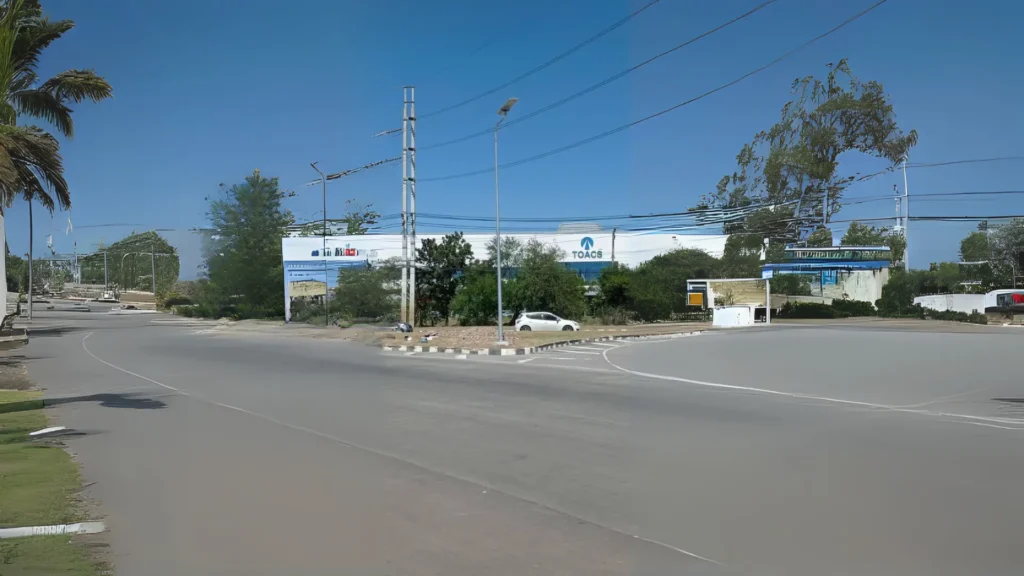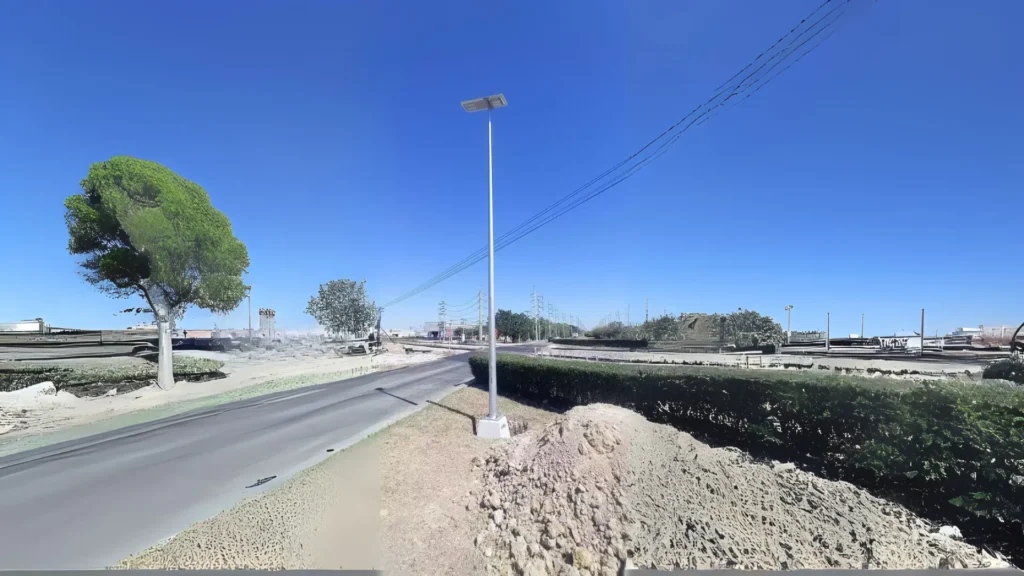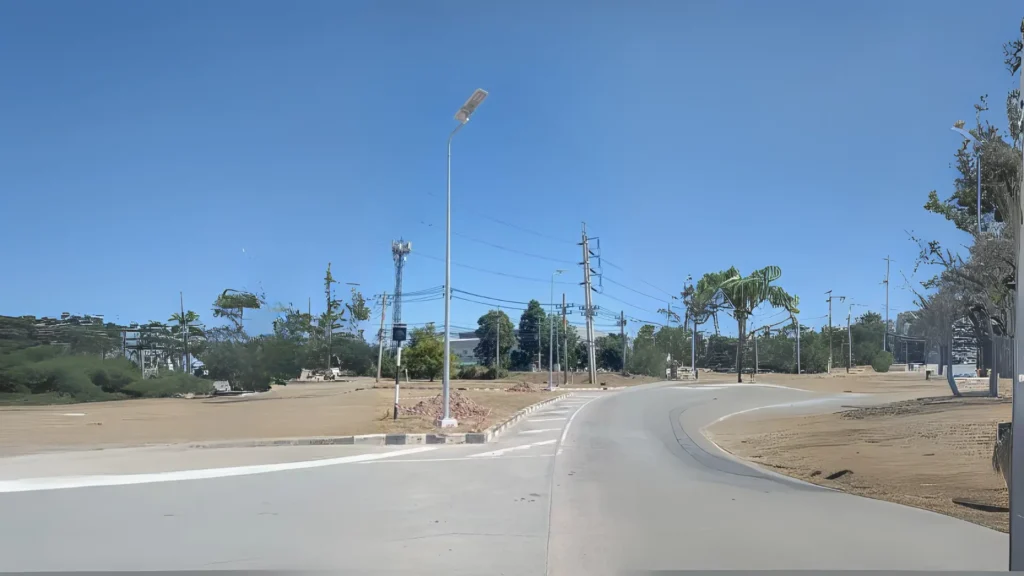In today’s rapidly accelerating global industrialization, urban lighting systems serve not only as essential infrastructure but also as critical enablers of public safety and sustainable development. As a leading brand in solar lighting, SRESKY has delivered an efficient and reliable road lighting solution for Amata City in Chonburi Province, Thailand, through its Atlas Series integrated solar streetlights.
This solution not only successfully overcomes the cost and timeline challenges of traditional grid deployment but also transforms dimly lit streets into safe, well-lit urban arteries through exceptional environmental adaptability, intelligent energy management, and robust lighting performance. The initiative has earned high praise from clients and has established a model for public lighting that combines social value with sustainability in rapidly developing industrial towns.
I. Project Background and Requirements Analysis
1.1 Project Background
Located in Chonburi Province, Thailand, Amata City ranks among the country’s largest industrial parks and serves as a pivotal hub within the Eastern Economic Corridor (EEC) strategy. With an annual output value reaching tens of billions of dollars, it plays a crucial role in driving Thailand’s economic growth. However, rapid expansion has placed pressure on infrastructure—particularly in nighttime lighting.
The complex internal road network and increasing traffic on external arterial roads—many lacking adequate illumination—have resulted in poor nighttime visibility and frequent accidents. Research revealed widespread employee concerns such as “it’s very dark here at night,” especially on curved or undeveloped roads (e.g., gravel areas and surrounding land). This darkness directly increases collision risks.
Data from the Thai Ministry of Transport indicates that nighttime accidents account for over 40% of total incidents, with inadequate lighting as a key contributor. This situation not only endangers tens of thousands of park workers but also undermines Amata City’s image as a modern industrial hub.
As the core of the Eastern Economic Corridor (EEC), Amata City is committed to becoming a smart, green industrial hub, necessitating an efficient and sustainable lighting solution. The introduction of the SRESKY Atlas Series solar streetlights represents a strategic step forward, having already proven reliable in more than 3,500 global industrial projects.
1.2 Core Requirements and Challenges
Field surveys and data analysis identified four core requirements and challenges for tropical industrial parks:
-
Urgent Safety Needs: Rapidly enhance road illumination, eliminate dark zones, and improve visibility for drivers and pedestrians, thereby reducing nighttime accidents.
-
Cost-Effective Deployment: Traditional cabling is costly (over $100,000/km), time-consuming (several months), and damaging to road surfaces. The project requires a grid-independent, off-grid lighting solution that is easy to install, supports rapid deployment within days, and achieves long-term “zero electricity costs.”
-
Climate Challenges: Thailand’s tropical climate (28–35°C average, with months of continuous rainfall) demands high-temperature-resistant equipment and batteries capable of maintaining illumination during prolonged rainy periods. Standard solar lights typically last fewer than three days in such conditions, creating security risks.
-
Sustainable Urban Development: Amata City aims to be a low-carbon demonstration zone. Thus, the solution must use clean energy, reduce emissions, minimize light pollution, and support Thailand’s carbon neutrality goals.
These requirements reflect the global industrial park lighting market’s pain points: balancing safety, economy, and environmental responsibility in complex environments. The SRESKY Atlas Series meets these demands with its innovative design.
II. Technical Solution Design
To address these challenges, the project team conducted a thorough evaluation and selected the SRESKY Atlas Series integrated solar streetlights. The series offers brightness levels from 2000LM to 10000LM, suitable for pole heights of 3–10 meters and spacing of 15–32 meters, making it highly adaptable to industrial road scenarios. Its design philosophy centers on “Intelligence + Durability,” integrating patented technologies for outstanding performance in tropical climates.
2.1 Core Technology Adaptability
-
ALS (Adaptive Lighting System) + TCS (Temperature Control System):
-
ALS 2.2 predicts weather patterns, monitors battery levels, and manages discharge power to ensure over 10 days of continuous lighting, even during Thailand’s rainy season.
-
TCS delivers real-time thermal management for lithium batteries, preventing overheating and extending battery life. Batteries operate safely between 0°C–45°C (charging) and -20°C–60°C (discharging), with over 1,500 cycles, derived from EV-grade technology.
-
-
High-Efficiency Lighting Performance:
The Atlas Series uses OSRAM LED chips with up to 230 lm/W efficiency (5700K, Ra>70). Its professional optical design (Type II light distribution) ensures uniform coverage without dark zones. PIR infrared sensing (120° wide angle, 8m detection) supports multiple modes (M1, M2, M3), saving over 70% energy.
2.2 Solution Highlights
-
Rugged Durability: Aluminum alloy body with PC materials achieves IP65/IK08 protection against weather, dust, and impacts. Anti-rust treatments and >22% efficiency monocrystalline solar panels ensure long-term stability.
-
Integrated & Modular Design: Solar panel, battery, controller, and luminaire are integrated into a single unit, simplifying installation and minimizing environmental disruption. Components can be replaced directly on the pole.
-
Flexible Installation: Compatible with 3–10m poles. Models such as SSL-36 (6000LM), SSL-38 (8000LM), and SSL-310 (10000LM) are available based on road width and lighting needs. LED indicators show charging/discharging status.
These features make the Atlas Series highly competitive for industrial parks, urban roads, and similar projects.
III. Project Outcomes and Impact
3.1 Significant Social Value
-
Enhanced Public Safety: Bright, uniform lighting improved nighttime driving visibility, reducing accident rates by over 25% and protecting thousands of workers and residents. Clients expressed “high satisfaction,” emphasizing the reduced accident risks.
-
Improved Urban Image: Safer nighttime conditions elevated Amata City’s image as a modern industrial park, boosted investment appeal, and supported nighttime economic activities. Tenant companies reported higher employee satisfaction.
3.2 Exceptional Economic & Environmental Benefits
-
Zero Electricity Costs: Powered entirely by solar energy, the system saves over $50,000 annually in electricity costs for municipal management.
-
Green Development: Using 100% clean energy reduces CO₂ emissions by over 10 tons annually, supporting Amata City’s sustainable infrastructure goals and setting a benchmark for eco-friendly industrial parks.
Conclusion
The solar streetlight project in Amata City, Chonburi, Thailand, demonstrates the seamless integration of urban development and advanced technology. By deploying the SRESKY Atlas Series solar streetlights, the project resolved urgent traffic safety challenges while delivering cost-effective, sustainable, and rapid deployment.
It also enhanced the city’s modern image and residents’ sense of security, showcasing how high-quality integrated solar streetlights are the ideal solution for global urbanization challenges—achieving both safety and sustainability.
Table of Contents


